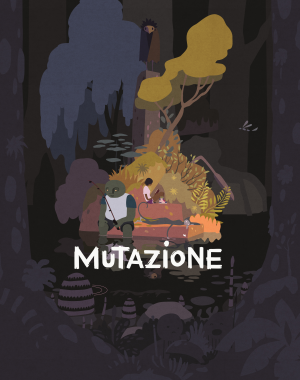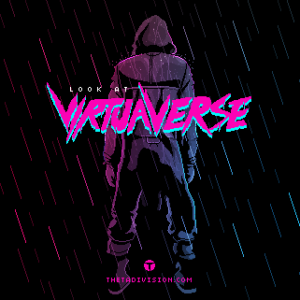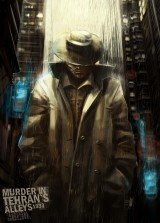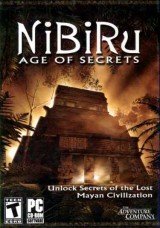Review for Spirit of the North
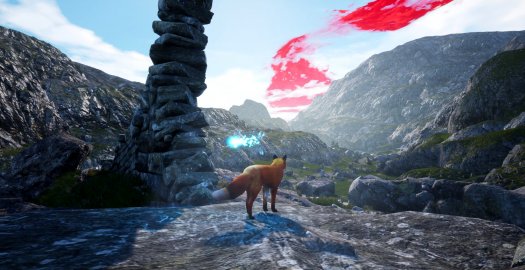
For my money, Journey and ABZÛ are two of the best video game experiences ever made. Both are wordless, but they manage to immerse and amaze with incredibly beautiful worlds that are a joy to explore. Playing those games is almost like a tightly choreographed dance, where everything moves with rhythm and feels perfectly paced. Infuse Studio’s Spirit of the North is a similar style of adventure, but sadly falls far short in terms of quality. It looks and sounds great, and it offers the intriguing hook of being able to control a fox, but this is a game that lacks much of anything interesting to see, let alone do. It feels empty, stirring no emotions despite the soaring music, which makes for a disappointing time.
Spirit of the North puts you in control of a cute red fox, who in the game’s opening is roaming a snow-covered land, the wind loudly whipping around. In the distance is a giant red swirl of energy, rising somewhere from the ground and enveloping the sky. As you trot along toward it, you’ll enter an ice cavern and find some peace and quiet. It’s not long before you encounter another fox, except this one is blue and translucent. This mystical creature guides you along for a while before suddenly turning into an orb of light to accompany you the rest of the way, always floating nearby.
I was intrigued by this mysterious opening: watching the fox plough through the deep snow is satisfying and the cold blue cavern, surrounded by bright ice walls as water pours down from above, is visually impressive. The orchestral music is excellent too, shifting between ethereal singing and slow piano. I was happily anticipating what was to come.
Unfortunately, it’s all downhill after the opening twenty minutes, with most of the next five or six hours feeling more like a chore that I was looking forward to being done with. The general gist of the story is that the world has been taken over by a disease, which manifests itself in suitably disgusting red boils attached to the landscape and spores floating in the air, and it’s apparently your role to cure it, which you can do thanks to your spirit buddy. While you’ll occasionally encounter murals depicting past events, the imagery is vague and without any dialogue, you’re mostly left to make your own backstory up.
It’s true that less can be more, but there’s a balance when it comes to maintaining a sense of intrigue while still telling an engaging story. The vague narrative allusions here fall on the wrong side of that line, and even the ending doesn’t provide much enlightenment. I would have liked to know more – about where the sickness came from, and the backstory of the two foxes. The premise of a suffering world being healed by a lone animal is intriguing, but it really never goes anywhere interesting.
I can forgive a lack of story if the gameplay makes up for it, but sadly that isn’t the case here. As the four-legged furry protagonist, you’ll come across special blue flowers that you can bark at to receive their energy. This enables you to do special things. In the early stages, it mainly involves transferring the energy to designated stone tablets which then magically alter the environment, like lowering the water level or removing blockages from passageways. Later, as your journey continues, you will gain new powers at set moments. These include the ability to quickly dash long distances or temporarily leave your body and become a spirit that can pass through any barrier. Learning these skills is spread out nicely so it doesn’t feel overwhelming, and you’ll use them immediately so that their purpose becomes obvious.
The problem is that you can often only engage with environmental hotspots or use the fox’s abilities when you have that blue flower’s energy. Once it’s used up on a particular interaction, it needs to be replenished. This single-use nature quickly becomes wearisome because you then need to hunt another flower to top it up, and they aren’t always in the most obvious place. I suppose there’s something symbolic about the fox drawing power from these rare plants, but the experience would benefit from less restrictive energy consumption, since continually scavenging for flowers is never really fun and often impedes momentum.
Only by using your special powers are you able to overcome obstacles, clear small pockets of corruption, and keep travelling. For example, you’ll need to rotate plinths to match symbols, which then causes a platform to rise out of the water so you can cross to the other side. Elsewhere you need to activate and then quickly dash between propellant air streams to get through a closing gate. Certain powers are tied to specific keys, like the dash or spirit body, that you can use at any time providing you have enough flower energy. Others, like transferring power to a stone or charging your body to clear corruption, can only be used contextually, at which point a button prompt appears.
Activities like these at least give you something to do periodically, but many of the puzzles aren’t particularly thrilling and can feel shoehorned in, like the developers wanted traditional game elements for the sake of it. Despite this, I appreciated how the difficulty smoothly ramped up to the point where you need to use multiple powers together.
Spirit of the North is split into chapters, but they all blend together because the scenery looks the same. You sometimes delve into tunnels that are too dark to see properly, but mostly you’re above ground surrounded by rocky mountains, grass, and water. It’s pleasant at first, but because the same elements are repeated and the colour scheme remains the same, everything tends to merge together into an indistinct whole.
There’s seldom a clear route to take, so I kept losing track of where I was. The red swirl in the sky is ultimately where you’re heading but it isn’t always visible as a marker, so you need to play around to figure out where the interactive elements are and what you need to do to open a way forward. Too often I would turn a corner and find a dead end or enter an alcove expecting to uncover a secret only for it to be vacant. There needed to be more thought given to how to guide players intuitively through a level. Only occasionally does this happen: one underground section has light pouring in to show your path, and now and then your spirit will fly to a point of interest. Such incidents are rare, though.
The level design issues are compounded by several things. First, the correct way to go can be the least obvious. You might need to jump to a ledge that you can miss completely unless you get the timing just right, or have to unnaturally clamber up some rocks that look too steep. I’d usually doubt myself about whether I was heading in the right direction, simply because the way I got there was weird. Second, and more annoying, is that these are large, empty locations with very little to see or do except look at the same archway or pile of rocks for the tenth time. If you do go the wrong way, it’s a slog to saunter around until you’re able to correct your course. You can sprint, but irritatingly this quickly exhausts the fox and you need to wait before your stamina recharges. A small map would have been helpful, or at least a way to ask your spirit companion for guidance.
All the tedium is a shame because the game looks great from a technical perspective. The high-resolution textures are crisp, and animations of the fox bopping as it moves, the grass swaying, or the water splashing show welcome attention to detail. As you approach more corrupted areas, the air is filled with red fog, which is fittingly oppressive. I especially liked the way the fox’s entire body becomes covered in symbols and glows when it soaks up the flower energy. At a glance the aesthetic is very pleasing; it’s just the repetition and actual layout of the levels that let the presentation down.
You can extend your playthrough by opting to find wooden staffs and returning them to nearby hidden skeletons. This imbues them with energy, and a cloaked figure briefly rises from each and bows. However, for the most part there’s no apparent benefit to this beyond the sense of personal achievement, as each time you return a staff, it shows your overall completion total. I like the idea, but ended up skipping many of them because I couldn’t be bothered to ramble around longer than necessary looking for more. Strangely, despite being largely optional much of the way, late in the game they suddenly, without warning, become a requirement for progression.
Since you directly control the fox, it feels natural to use a controller. The left stick handles movement and the right stick the camera (which you’ll need to do, since sometimes it automatically pushes in awkwardly close), with the other buttons correlating to jumping or sprinting or power usage. If you don’t have a controller, the standard mouse/keyboard combination can be used. The control scheme is fine either way, but movement is imprecise. This isn’t an issue when in open spaces, but it becomes infuriating when you need to make exact jumps or reach something within a time limit. I knew what to do, but the fox would veer the wrong way or completely miss a landing. Another quibble is that whenever the fox exits water, it shakes out its fur – charming at first, but annoying thereafter since it locks movement for a couple of seconds.
There are some physical inconsistencies to contend with as well, like being unable to climb up on something that is clearly reachable, or partly clipping through objects. Also, on three occasions I got stuck between things, unable to move. The only way to escape was to reload, and because there’s no manual save it meant being whizzed back to the previous checkpoint (which are represented by wind chimes and are not as common as you would hope). I wasn’t even off the beaten track when these bugs happened.
The musical excellence continues throughout, but even that comes with a caveat. Taken on its own, it’s probably the standout feature of the whole game. It’s generally peaceful, rising and falling melancholically, though it does periodically burst out and elevate into a quick pace. That said, it often doesn’t reflect what’s happening on screen. While I could see it pulling at my heart strings in the right context, or making me feel excited, it’s a bit odd when the music is quickening and I’m still ambling around leisurely. As such, the soundtrack ends up feeling disconnected despite its quality. The ambient effects are better integrated, like the collapsing of rock as pathways open, or the splashing of water as the fox swims. The mystical sounds are effective too, like the vibrating hum as you learn a new power or the echoey bark of your spirit guide.
I really wanted to enjoy Spirit of the North, since I’m a big fan of relaxing games that explore fantastical settings, but I was so disappointed. I was overwhelmingly bored through most of it, feeling like I was aimlessly wandering around until I encountered the next puzzle, which I’d then get frustrated by due to the imprecise controls. There wasn’t even an interesting backstory to uncover to keep me hooked and make it worthwhile. If you want an exploratory puzzle game featuring a fox, check out RiME, as this one ends up going south in a hurry.











